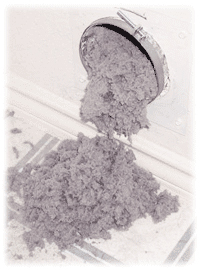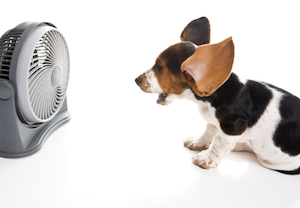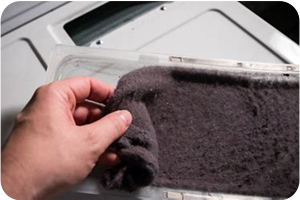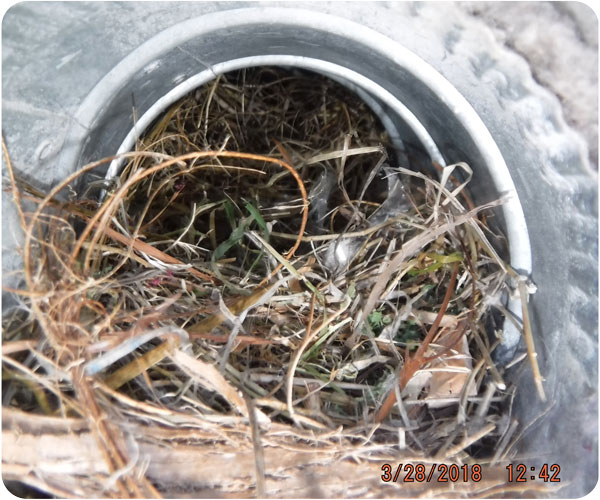
More Articles

And you thought we've talked enough about dryer exhaust systems! There are even more details, some you may know and some things you never thought of. We do get a lot of questions, and we are here to provide the answers.
One would expect the clothes to be dry after you run them through the drying cycle. That is the way it should be, but what about when it isn't that way? More often than not, it is that the dryer exhaust vent needs attention, even when the dryer itself seems to be the problem. You simply want your clothes to be fresh and dry!

So what is the data about dryers, dryer vents and what should you look for? Here are some of the most asked questions we receive on a daily basis.
How does a dryer work? Doesn’t it just get hot and dry the clothes?

It does get hot, but it dries the clothes by pulling in air from outside the drier. The air is heated which warms the clothes. The hot, moist air from the clothing is then vented to the outside and as that air is removed, it is replaced with cool air from the room where the dryer is located. This same process continues until the clothes are dry.
Improper duct installations can lead to problems. For example, a vent system that’s too long can lead to a drop in pressure along the vents, causing the heated air to linger, and the clothes take longer to dry all resulting in overworking the dryer and burning up more energy.
How hot does a dryer get?

A dryer’s temperature typically is about 122 °F- 176°F depending on the make and model. Most residential models are around 160°F.
How can I tell whether the dryer exhaust vent needs to be cleaned?
The most common things one might notice are that the dryer is taking longer to do its job. The dryer may shut off or you are getting error codes pop up on the display. Most dryers, particularly newer models have a safety feature that will shut down the dryer when it detects lowered air flow or when it begins to overheat.
How often should the dryer vent be cleaned?

There is no fixed answer to this, it depends on many things: How many loads are done in a week, what the design of the exhaust duct is, what is being done in the home or facility. For instance, the dryer in a vet hospital may need cleaning once a month, or a fitness center may need cleaning 3-4 times a year. But in general we have found that residential dryer vents should be cleaned every 2-4 years.
Can a dirty dryer vent be dangerous or burn down my house?

It can be a fire hazard. Around 16,000 dryer-related fires are reported on average each year according to the National Fire Protection Association. Most of these fires were because of maintenance issues and poor ventilation. Lint is very flammable and poses the worst of all consequences, so it is not wise to ignore this factor. However, threat of fire is not the main reason to keep it clean - proper dryer function and efficiency are the more common reasons to keep that dryer vent cleaned and maintained.
Why does a clogged up dryer exhaust make it take so long to dry the clothes?

The operation of a clothes dryer depends on an adequate volume of air being pulled in, heated and exhausted as described above. An accumulation of lint and debris in the venting reduces this air flow and so reduces the efficiency of the dryer.
How much air should be moved by a typcial dryer?

Typically, a dryer will exhaust around 100 to 250 CFM (Cubic Feet per Minute) at a rate of approximately 1200 FPM (Feet per Minute). This is assuming that your dryer’s capacity, ductwork, and other factors are properly designed and installed.
But once these influencing factors change, the exact rate your dryer exhausts air will alter as well. For instance, a dryer vent with a number of 90° turns will move dramatically less air.
A major influencing factor is a duct laden with lint and debris will move a lot less air.
How does a clogged vent affect the dryer itself?

A clogged vent can and often does damage a dryer, especially newer computer operated models that have sensitive control boards, sensors and safety features. When the air flow is backed up or the heat is too high, the sensors can even break and won’t properly reset.
How long should the exhaust vent be?
Manufacturers recommend that a vent pipe be no longer than approximately 25’. A vent longer than 25’ will reduce the air flow and thus the efficiency. If, by reason of location, design, etc., the vent needs to be longer than 25’ it is recommended that an in-line booster fan be installed. And again, minimize the 90° turns.
What if there are 90° elbows in the exhaust duct?
Each 90° turn in the exhaust duct reduces the air flow and also reduces the allowable length of the duct by 5’ per 90° turn. So this is an important factor to keep in mind when installing or designing a dryer exhaust.
Can flexible dryer vent hose be used the whole way to the exterior?

No. Most building codes require that hard pipe 4” inches in diameter (galvanized metal duct) be used. The flex connector is to be used only to connect the dryer to the hard pipe or the end of the metal duct to the discharge point of the structure. Ideally, the pipe should be straight or slender, with as few bends or angles as possible. We find that many dryer vents are installed with flexible duct the whole way, but they shouldn’t be.
Isn't the lint trap supposed to stop the duct from getting dirty?

A lint trap does capture a portion of the lint generated by the dryer, but does not stop all of it and so over time, the vent will accumulate lint and lead to the problems associated with dryer vents.
Can I clean it myself?

Sure you can clean it yourself. Kits are available. But do you really want to?
Does the vent pipe ever need to be replaced?
Eventually over time, the flexible connector will deteriorate and need replacing. A galvanized exhaust duct should last a long time, but even those may need replacing if they’ve been neglected or been exposed to high moisture over time or damaged in some other way.
What about birds or other critters?

Animals tend to gravitate toward warmth, and so on occasion, birds or rodents may get into the exhaust duct and nest there. In this case, the nesting material and/or animals should be removed. This is followed up by ensuring the exterior exhaust is protected from intrusion or the duct may be disconnected. It should be sealed from end to end.
Typically, a “backdraft” damper is installed at the end of the exhaust duct. Backdraft dampers (also called gravity dampers) allow airflow in one direction and prevent reverse airflow for use in exhaust systems. In a dryer exhaust the damper or flap is very light and is opened when the dryer is pushing air out. When the dryer is off, the flap closes preventing back draft. They also discourage animals from getting into the duct.
We do NOT recommend installing woven wire screen over the end as those clog up very quickly with lint!
Remember, local building codes require certain factors to be taken into account when designing, installing or altering a dryer vent system. These codes are in place to ensure the proper and safe operation of your dryer.
Here is to fresh and dry clothes!
Until next time!






